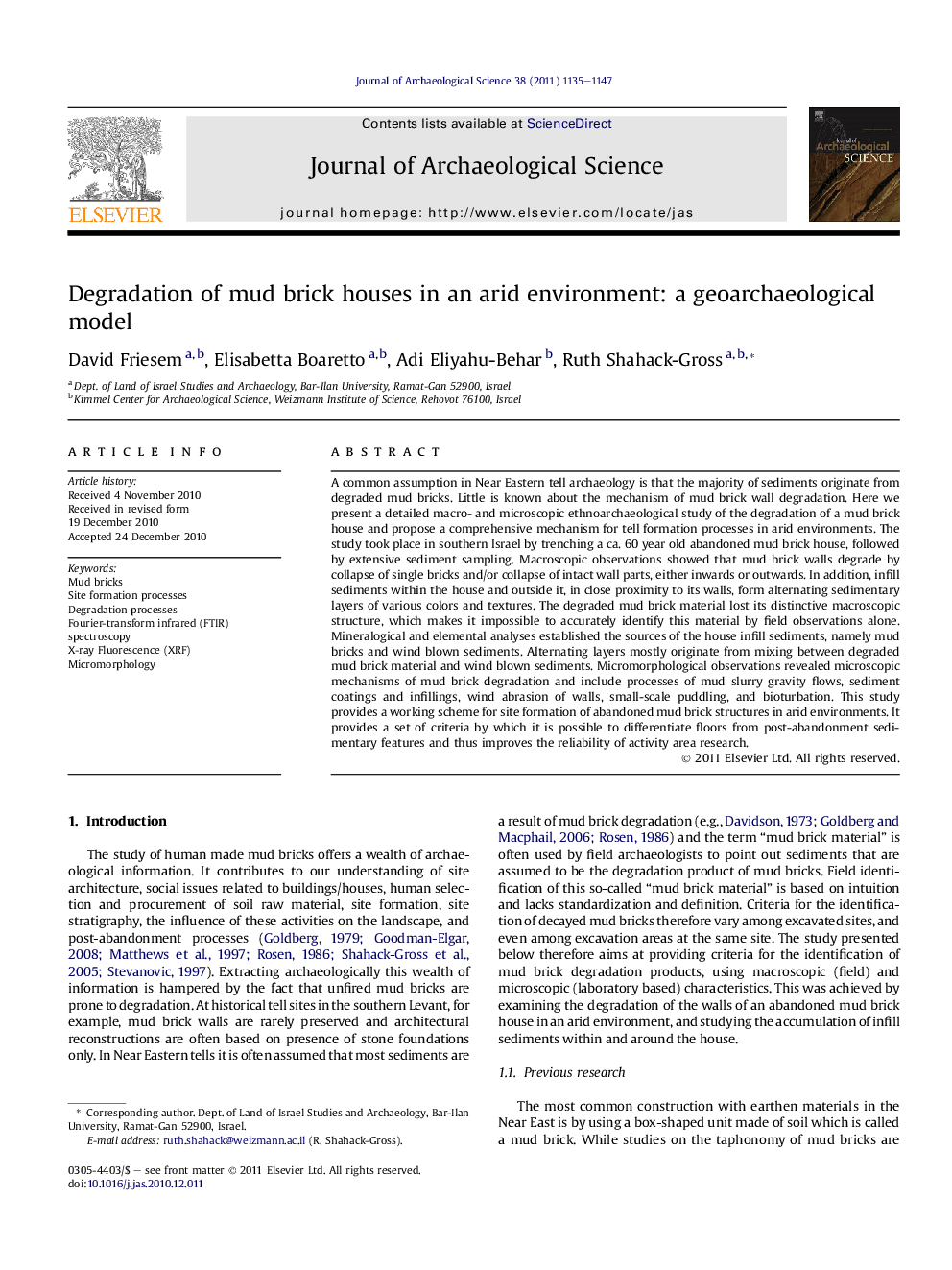| Article ID | Journal | Published Year | Pages | File Type |
|---|---|---|---|---|
| 1036068 | Journal of Archaeological Science | 2011 | 13 Pages |
A common assumption in Near Eastern tell archaeology is that the majority of sediments originate from degraded mud bricks. Little is known about the mechanism of mud brick wall degradation. Here we present a detailed macro- and microscopic ethnoarchaeological study of the degradation of a mud brick house and propose a comprehensive mechanism for tell formation processes in arid environments. The study took place in southern Israel by trenching a ca. 60 year old abandoned mud brick house, followed by extensive sediment sampling. Macroscopic observations showed that mud brick walls degrade by collapse of single bricks and/or collapse of intact wall parts, either inwards or outwards. In addition, infill sediments within the house and outside it, in close proximity to its walls, form alternating sedimentary layers of various colors and textures. The degraded mud brick material lost its distinctive macroscopic structure, which makes it impossible to accurately identify this material by field observations alone. Mineralogical and elemental analyses established the sources of the house infill sediments, namely mud bricks and wind blown sediments. Alternating layers mostly originate from mixing between degraded mud brick material and wind blown sediments. Micromorphological observations revealed microscopic mechanisms of mud brick degradation and include processes of mud slurry gravity flows, sediment coatings and infillings, wind abrasion of walls, small-scale puddling, and bioturbation. This study provides a working scheme for site formation of abandoned mud brick structures in arid environments. It provides a set of criteria by which it is possible to differentiate floors from post-abandonment sedimentary features and thus improves the reliability of activity area research.
Research highlights► Infill sediments in decaying mud brick houses accumulate via water and wind weathering and transport. ► Sedimentary sources of infill sediments can be identified through elemental analyses. ► Mixing of infilling sedimentary sources is a major process in decaying mud brick houses in arid environments. ► Mud brick degradation in an arid environment via sheetwash processes results in formation of pseudo-floors. ► Micromorphology is essential for understanding the mechanisms of mud brick wall degradation, and infill accumulation.
